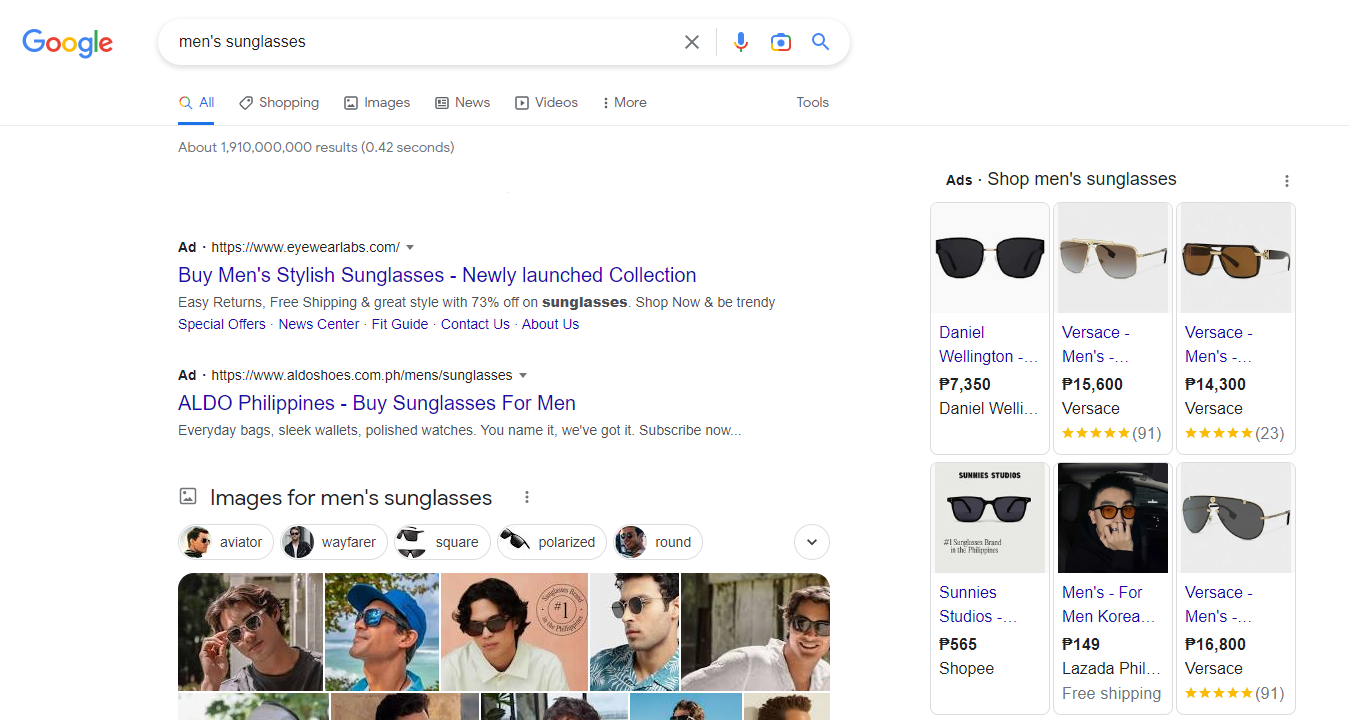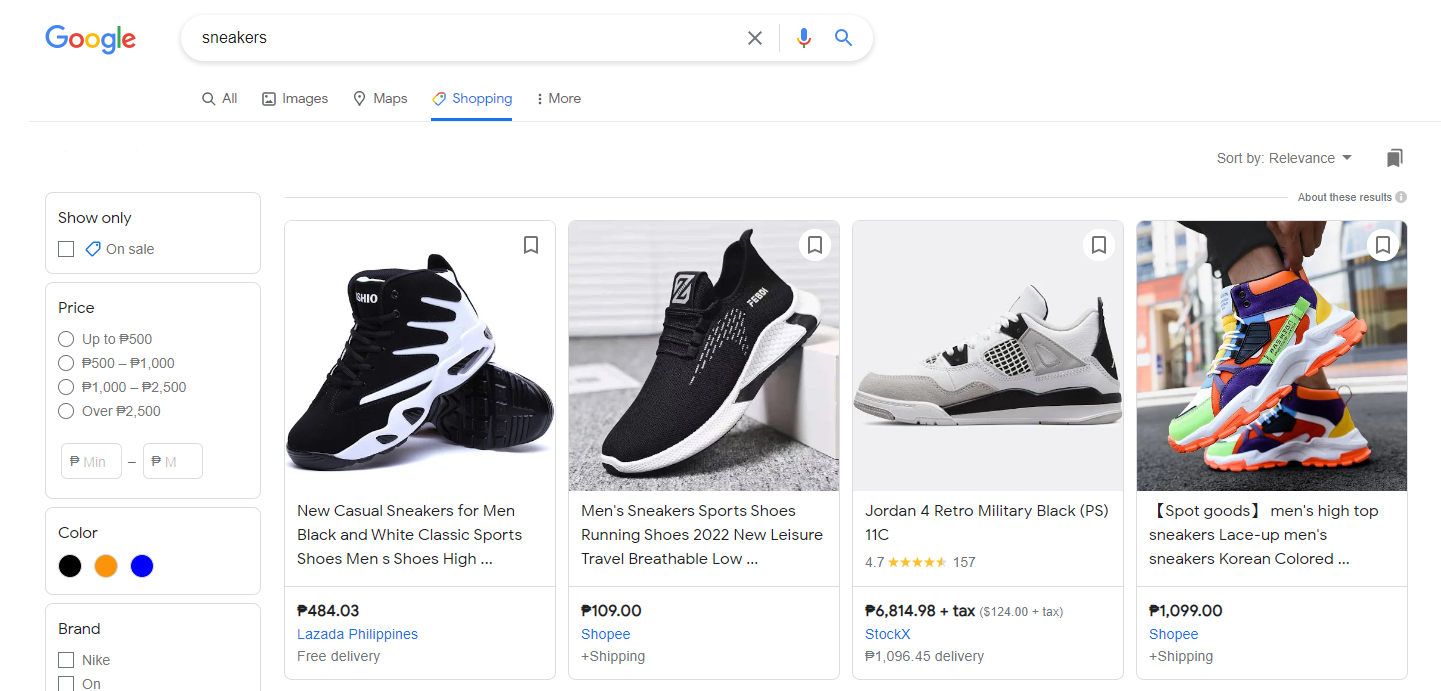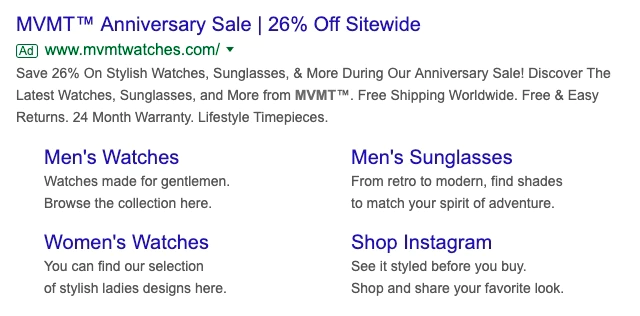Search ad campaigns can help your business achieve optimal results, even in the most competitive markets. What sets great ad campaigns apart from flops are their copies. In fact, copies are what make or break your advertising effort.
For those unfamiliar with the term "copies," it’s derived from the Latin word “copiae,” which means ‘an abundance of writing’. It’s the content or text that’s written strategically to encourage readers to take action or purchase a product.
If you fail to create effective ad copies, your ads won’t get clicks or conversions. At the end of the day, it’s all about the copies your ads showcase.
Writing a good copy is easier said than done. Every content creator or copywriter has their own method of generating ideas. Sometimes, it can be hard to find the right words to fully describe what you have to say.
When it comes to creating an ad copy for search campaigns, you may find it a bit harder since there are character limits — the numerical limit of how many letters, spaces, numbers, and symbols you can add to a text box —, and ad copy needs to be very distinct compared to just social media captions.
Before you go down the rabbit hole of overthinking about what copy you should add, take a look at this article and learn more about how you can write effective ad copies for search campaigns.
Still unsure why you should invest in paid search campaigns? Read more about PPC here: “What Does PPC Stand For & Why Invest in It”
What is a Search Campaign?
Business owners and marketers know that having a strong presence online is important nowadays. Right now, the biggest search engine in the world is Google, seeing more than 40,000 searches every minute. That colossal number alone should be enough to tell you how important search campaigns are.
Search campaigns are text ads on Google search results from pages that help you connect with consumers as they look for the goods and services you provide.
It works like this — next to the organic results on your results page are ad boxes with pertinent advertisements. A search campaign’s main aim is to encourage users using convincing call-to-actions to click on their PPC ads.

Your business may target your advertising to those who are specifically looking for your goods and services, which is ideal for increasing sales, leads, or traffic to your website.
Search campaigns are easy to set up given that you know the right keywords and how to write effective ad copies. It can be a good choice for marketers as it allows for highly specific targeting.
According to Google Ads, there are 7 types of search campaigns on the massive search engine. Since each business has specific needs, you’ll need to know their differences and identify what you need before you proceed to the next step.
Essentially, search ads and PPC are interchangeable, and both can significantly help you accelerate your business' growth.
If you're looking for the best-fit service provider for your campaign, take a look at Clutch's rankings for the top PPC agencies!
7 Types of Search Campaigns
Display campaigns — from the word display itself, it’s easy to see that display campaigns are more focused on visually appealing ads to target potential customers.
Video campaigns — this type of search campaign is generally used by B2C and startups to drive awareness for their brand or products, but can be replicated for B2B services. More often than not, video campaigns are applied on YouTube.
App campaigns — these are more app-specific campaigns that can go on many channels aside from search engines. You can use this to market your apps, find new users, and even boost sales.
Local campaigns — this type of campaign helps businesses to drive traffic to a physical location or venue. Local campaigns automatically optimize ads to appear in nearby areas and show them on Display, Maps, and more.
Smart campaigns — according to Google, Smart campaigns are the most simplified way to automate campaigns and reach your target audience. Businesses can input their information and create a few templated ads which Google will use to find their desired customers.
Performance Max campaigns — similar but not exactly the same as Smart campaigns, Performance Max is AI-powered and is marketed by Google as an all-in-one campaign builder.
Shopping campaigns — retailers and B2C businesses prefer this type of search campaign because it allows them to showcase their product listings. Aside from the search results, shopping campaign ads also appear on the Google Shopping tab.

Once you identify which type of campaign best suits your business, you can then proceed to the next step and start creating the campaign, doing ad copywriting, and adding necessary elements.
What’s Included in a Search Ad?
An ad headline, display URL, and description text are the three key parts of a search ad, and they are all intended to persuade users to click through. Aside from those, marketers add extensions that can be used to give users more information.
Another component that should not be forgotten is the keyword. Adding the right keywords to your search ad determine ad performance and if more potential customers see it.
Users that do searches often have a particular goal in mind. They don’t want vague results; they are seeking concrete data, helpful recommendations, comparisons, tools, or answers to particular issues.
When creating your search advertisements, it's critical to comprehend the search terms customers would use to locate your brand or product.
What is Campaign Structure?
When creating a search campaign, you can often get lost and be overwhelmed by how you should start everything. No one starts hitting the ground running, it’s important to understand the campaign structure you need for your specific project.
After identifying which campaign type, the next thing you need to know about is how to set up a campaign structure.
What exactly does a campaign structure entail? The construction of campaigns, ad groups, specified keywords, advertising, and landing pages will be mapped out by your ad structure. You may create specific guidelines for each ad using this framework to help you identify your objectives.
Depending on how many goods or services you're promoting, how segmented your target market is, which areas you want to target, and which platforms you'll be using for advertising, will determine how many adverts you require.
10 Steps to Writing Effective Ad Copy for Search Campaigns
Now that you have all of those under wraps, you can start writing effective ad copy for search campaigns. These major steps can make sure that your ad copy doesn’t flop.
The ten steps to writing effective ad copy for search campaigns:
- Do your research
- Bring variety
- Show what makes your brand great
- Categorize and organize your ads into themes
- Include ad messaging
- Add special offers
- Make it mobile friendly
- Promote your call-to-action (CTA)
- Testing, testing, testing!
Do Your Research
Research isn’t just about reading the hows and whats. It’s also about looking at similar copies. No, this doesn’t mean that you’ll be copying from those ads because if that were the case, then that eliminates the feeling of uniqueness for your copies.
By doing diligent research, you can see the perspective of your competitors, how those copies perform, and think of new approaches that will set your brand apart from the rest.
Another bonus of doing research is seeing your users’ language.
As mentioned, keywords are essential when it comes to PPC campaigns. Extensive keyword research is also a great way to build the foundation for your ad copies.
Having trouble with keyword research? Here’s a piece that can help you: “How To Avoid Keyword Research Mistakes On Google”
Bring Variety
Potential customers don’t want to see the same thing over and over. Ad copies that sound repetitive don’t get a lot of attention. Don’t be afraid to bring variety to give your campaigns more character.
They don’t need to have different voices, just varying lengths and approaches. You can incorporate questions, statements, or even fun facts in your ads.
If you bring a lot of quality in your variety, your customers and searchers can see the thought you put into your copies.
Show What Makes Your Brand Stand Out
It’s natural for humans to seek uniqueness. Never be afraid to showcase what makes your brand stand out above the competition. If you write vague copies about your products or services, it may fail to catch the interest of potential customers.
It’s not easy to stand out in just a few words, but make the most out of every character on your copies. There’s a limit on how long you can go on your copies. Remember, you’re not writing a blog post and long copies don’t garner attention.
It’s crucial to utilize every real estate wisely by already showing what your brand has that others don’t. Make sure to mention what makes your product or service special!
Categorize and Organize Ads Into Themes
Themes are ad groups organized accordingly to traits that they share in common. Now that you understand the importance of variety, the essential next step to that is knowing how to segregate your ad copies into themes.
For example, you can organize themes by keywords that are in demand. Each theme will focus on one particular highly-searched keyword.
Include Ad Messaging
An ad message is a concept that an advertiser wishes to convey to their target market and generate demand. Its objective is to persuade customers to do a certain activity, such as signing up, making a purchase, or making a reservation.
MVMT, an American watchmaking company, launched a search campaign for its anniversary that successfully incorporated its ad messaging. The company has always positioned itself to have premium-quality watches at an affordable price.

Source: Shopify
This ad not only showcases its ad messaging, but also incorporates the next step.
Add Special Offers
Frequently, marketers use search campaigns when they have special promos or events for their brands. MVMT’s search campaign above highlights a discount that adds appeal to potential customers.

By adding a specific event with incentives such as discounts, customers feel a sense of urgency, helping make your copies more effective.
Make It Mobile-Friendly
Mobile phones are an essential part of daily life, and that’s why ads and copies should be optimized to be mobile-friendly. Sometimes, customers are just scrolling through their phones when looking for particular products, services, or even places to eat.
In fact, most consumers just search on their phones instead of turning on their laptops to quickly look for what they need. An effective copy for a search campaign takes into account how they appear on mobile search engines.
Don’t Forget Your Call-To-Action (CTA)
A call to action (CTA) is a prompt that appears on a website and instructs the user to perform a certain action. There are a bunch of types of CTA, but usually, they appear as a button or hyperlink and are worded as a command or action phrase, such as "Sign Up" or "Buy Now."
Without a clear CTA, the visitor can be unsure of what to do next to make a purchase or subscribe to your services and is more likely to scroll past your search campaign.
Copies without CTA leave potential customers hanging so don’t forget it at all costs!
Have a clearer grasp of what CTA’s work with this piece: “How To Boost Conversion Rate With A Call-To-Action Button”
Testing, Testing, Testing!
Now that you have all of those steps, it’s time for you to test your ad copies for your search campaign. If you’re already confident in your copies, think again! What may look good to you or to your team might not be effective in practice.
You can run different assessments like A/B testing to find out which themes best generate results, what approach best works for your target audiences, and how long your copies should go.
Generate Effective Ads to Support Your Business’ Bottom Line
The last and most important tip in this article is to take time to double-triple checking for spelling and grammatical errors! Such mishaps may seem minor, but they can make your copies look less professional!
Let your ingenuity shine when writing an ad for your search campaign! To write effective copy, you need to have not only knowledge about your product but inspiration. Follow these steps and study more about how the search engine game works.
You can also pair your search campaign efforts with other digital marketing efforts like SEO and content marketing to have higher chances of getting the best results.
Take a look at this list compiled by Visual Objects of the top digital marketing agencies if you’re interested in working with a partner who can write effective ad copies for your search campaigns.